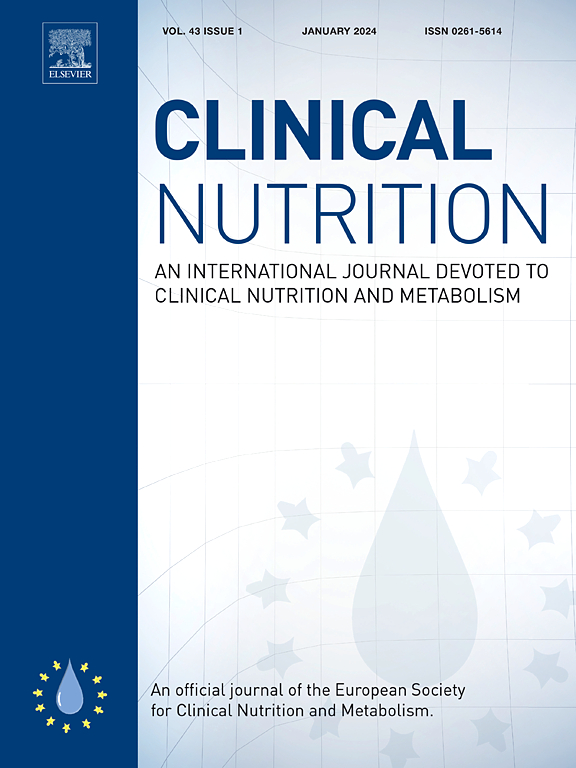Prophylactic anticoagulation in children receiving home parenteral nutrition: An international prospective multicenter study
IF 6.6
2区 医学
Q1 NUTRITION & DIETETICS
引用次数: 0
Abstract
Background & aims
Catheter-related thrombosis (CRT) is a serious complication associated with home parenteral nutrition (HPN) in children with chronic intestinal failure (CIF). Guidelines on pediatric HPN state that there is insufficient evidence to advocate the prophylactic use of CRT. Aim is to evaluate the efficacy and safety of prophylactic anticoagulation in preventing CRT in children on HPN.
Methods
We performed a prospective, international, multicenter study across three expertise centers. Children aged 0–18 years on HPN were included and divided into two groups: 1) primary/secondary prophylaxis- and 2) non-prophylaxis group. Participants were followed for 24 months and screened for CRT using ultrasonography annually. Primary outcomes included total incidence of CRT per 1000 catheter days, and association between prophylactic anticoagulation and CRT. Propensity score stratification and logistic regression were used to evaluate the association between prophylactic anticoagulation and CRT, adjusting for significant covariates differing between groups. Balance was visually assessed before and after stratification, and statistical significance (p < 0.05) was determined. Secondary outcomes included incidence of catheter-related bloodstream infections (CRBSI) and bleeding events per 1000 catheter days.
Results
A total of 115 children, mean age of 6,9 years (SD 4,6), were included. Fifty-seven patients were receiving prophylactic anticoagulation (50 %). The overall incidence of CRT was 0.17 per 1000 catheter days in 13 patients (11 %), with no significant difference between the prophylaxis (n = 6) and non-prophylaxis group (n = 7) (odds ratio 0.64, 95 % CI: 0.12–3.4, p = 0.60). Incidence rate of CRBSIs was 0.34/1000 catheter days (n = 25). Patients with CRT during follow up were significantly more likely to have a CRBSI (54 %) compared to those without (14 %) (p = 0.010). Two minor bleeding events were reported in the prophylaxis group, resulting in an incidence of 0,03/1000 catheter days.
Conclusions
Our study shows that prophylactic anticoagulation does not significantly reduce the incidence of CRT in children on HPN. Our results do underline the clinical importance of optimal catheter care and infection prevention as CRBSIs were more likely to occur in patients with CRT, and emphasize the need for larger multicenter trials to establish evidence-based recommendations for the use of prophylactic anticoagulation in children on HPN.
求助全文
约1分钟内获得全文
求助全文
来源期刊

Clinical nutrition
医学-营养学
CiteScore
14.10
自引率
6.30%
发文量
356
审稿时长
28 days
期刊介绍:
Clinical Nutrition, the official journal of ESPEN, The European Society for Clinical Nutrition and Metabolism, is an international journal providing essential scientific information on nutritional and metabolic care and the relationship between nutrition and disease both in the setting of basic science and clinical practice. Published bi-monthly, each issue combines original articles and reviews providing an invaluable reference for any specialist concerned with these fields.
 求助内容:
求助内容: 应助结果提醒方式:
应助结果提醒方式:


